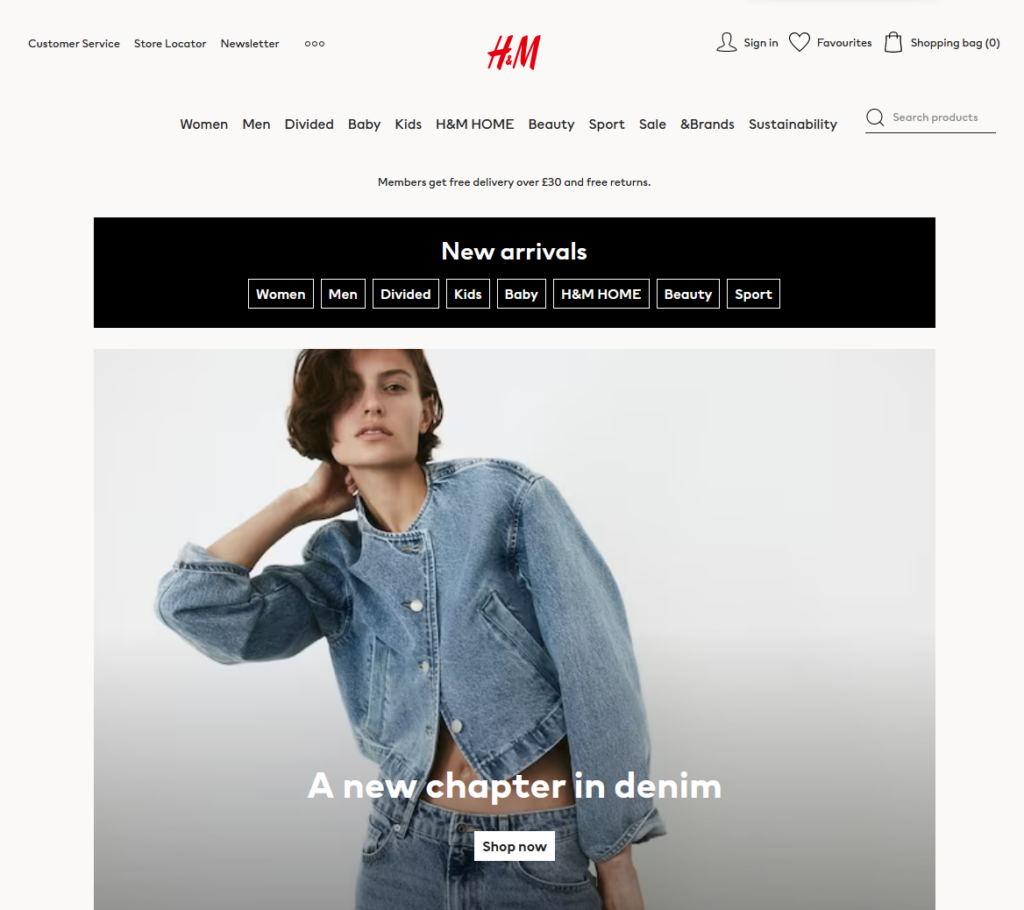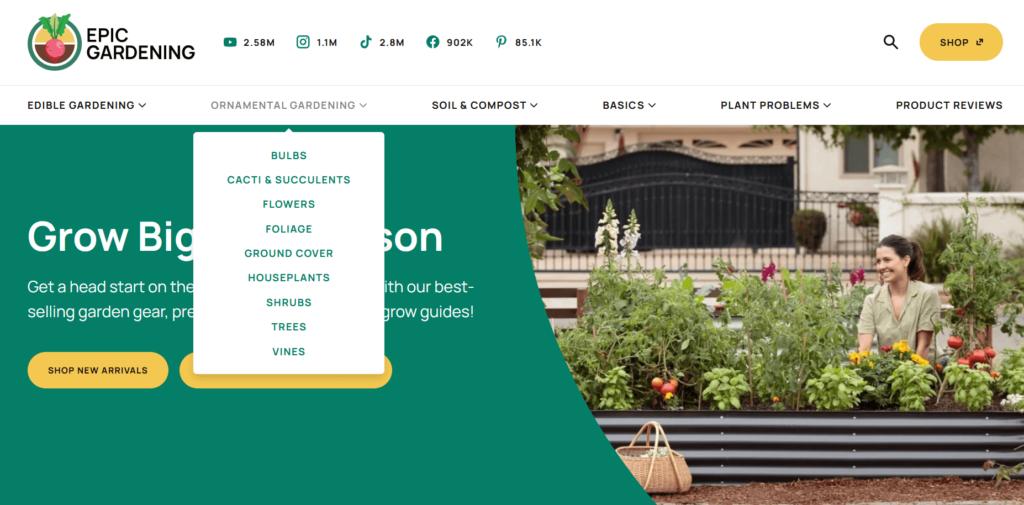Internal links are clickable links, or hyperlinks, that link one page of a website to another page of the same website.
Clicking on an internal link will take you from one page of a domain to another page on that domain.
For example, to get from a home page to a product page on a clothing store website, you might click on the ‘sweaters’ or ‘jeans’ hyperlink.
Purpose of Internal Links
Internal linking offers numerous SEO benefits to a website, ultimately helping it rank higher on SERPs.
User Navigation
Internal linking is the main way that users navigate their way around a website. Internal links effectively serve as a roadmap for a website, helping the user get to where they want to go.
A website with a good internal linking structure improves user experience because they can easily identify how to get from one page to another. And, of course, Google prioritises user experience to determine which pages to deliver on its search engine results pages.
Improve SEO
Internal links allow new pages to be discovered by crawlers since they use these to explore the web.
They also serve to indicate the hierarchy of a website to Google, allowing it to understand what are the most important pages, and effectively helping it to index pages appropriately.
Being found and indexed by Google crawlers is essential to stand a chance of ranking in Google search results, so web sites need to include them on every page.
Internal Links Vs. External Links
An internal link points to other pages within the same website, whereas external links, or backlinks, point to a different website. Internal links keep users on your website for longer, while an external link will direct them to an alternative website.
Both internal and external links are important for SEO, but they serve different purposes. A healthy balance of internal links and external links is recommended for best practice.
They can boost rankings as they impact user experience and crawlability. External links can boost rankings by improving a website’s trust, authority, and prominence.
What is Your Most Important Content?
Before you look at implementing an internal link strategy, you need to figure out which pages on your website are the most important, and essentially, where you want to be directing most of your visitors.
For example, if your website sells women’s shoes, the main focus of your homepage might be an internal link to ‘winter boots’ during the colder months, while in summer you might switch this to ‘sandals’.
You may also want to include direct links to a product page of your best-selling design of shoes, to help customers get where they want to go more quickly and improve conversion rates.
To signal to Google which pages on your website are the most important, include it to these pages on your other pages.
The more internal links point to a page, the more important it is deemed to be.
Internal Link Strategy
There are different types of internal links you should be using on your website.
These include navigational links, footer links, and contextual links. Let’s identify each of these linking options and look at how to implement a solid strategy.
Navigational Links
Navigational links are arguably the most important internal links on your site in terms of ensuring a good user experience.
The navigational links are typically arranged in a block or list somewhere at the top of a website, making them easy for users to find and figure out what they need to click to get to where they want to be.

Footer Links
Footer links are the least important internal links on a website, simply because they lead to information that is typically among the least visited content on a website.
Due to this, you can usually find them at the very bottom, or the ‘foot’, of a website. Footer links usually include them to pages such as ‘FAQ’s’, ‘About Us’, and ‘Terms and Conditions’.
Although they may not link to your most crucial content, footers are important to demonstrate to both users and search engines that you are legitimate and trustworthy.
Contextual Links
Contextual links are the internal links that can be found within the copy of your website.
They are incredibly useful for helping search engines crawl new pages on your site, and they also offer benefits to users as they easily direct them to other pages that may be of interest. Let’s say you have a gardening blog with a post titled ‘Best Ways to Prepare Your Garden for Spring’. It’s likely that within that post you mention removing weeds from the garden.
This is a prime opportunity to guide readers to one of your previous posts that details weed removal tactics. You would link the anchor text ‘removing weeds’ to your URL for the weed removal blog post. This is useful for readers who might want to know more about weed removal, and it also leads Google bots to more pages on your site for indexing.
Pyramid Scheme
Don’t worry, it’s not the pyramid scheme you’re thinking of.
When creating a strategy for your internal linking structure it’s commonly recommended to adopt a pyramid hierarchy.
With this, your most important web pages are at the top, and the page importance decreases the further you get down the pyramid. This top-down structure helps users navigate your website more easily and efficiently to improve user experience, and it also sends helpful signals to search engines so they can understand the context of each page within the bigger picture of the website as a whole.

In Short
Internal linking should be a priority for all websites. Yes, you read that correctly, all websites.
(The exception is for one-page websites, which quite literally have nowhere to internally link to, but when was the last time you saw one of those?)
They guide the user, as well as crawl bots, through your content.
This helps with user experience as well as indexing, both of which are prime areas that search engines use when deciding if your website is worthy of being shown on SERPs. Adding them is a simple process, though organising the layout of your website and determining the best way to navigate around it using internal links can be more tricky.
Contact us to find out how we can improve your website.